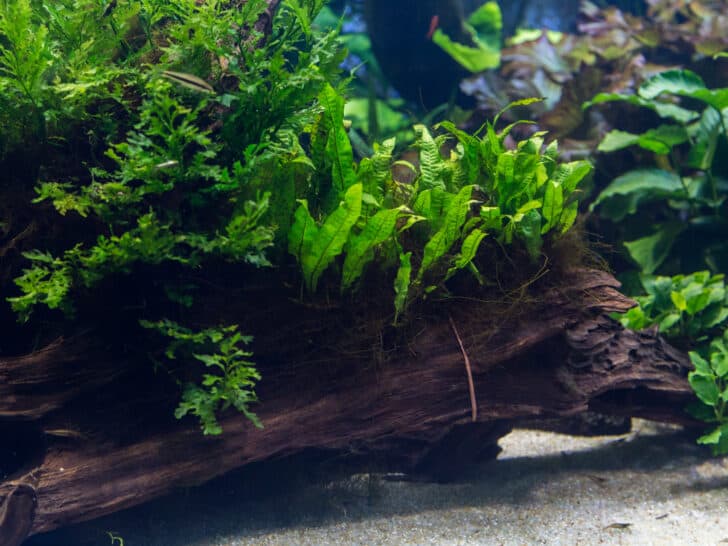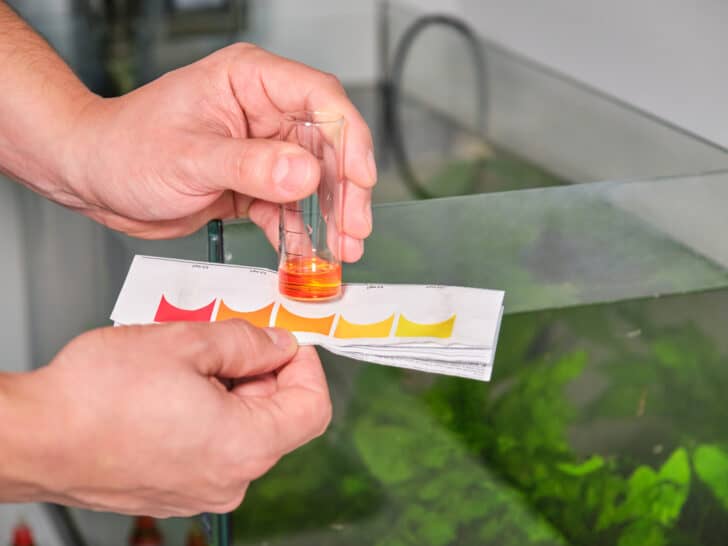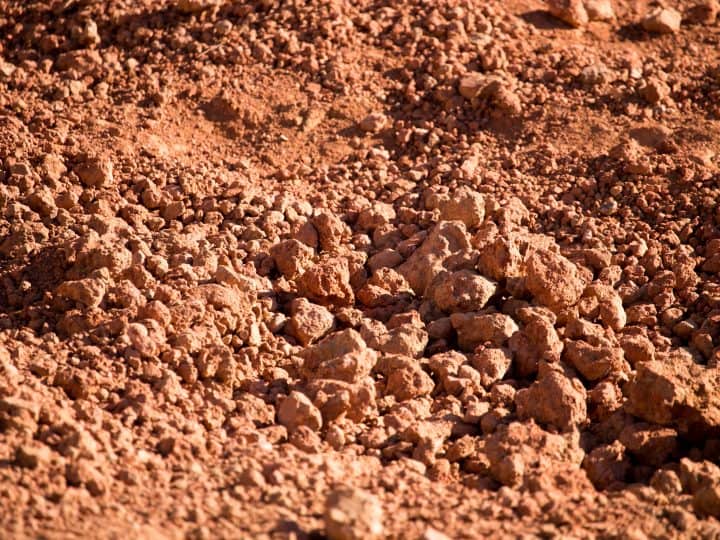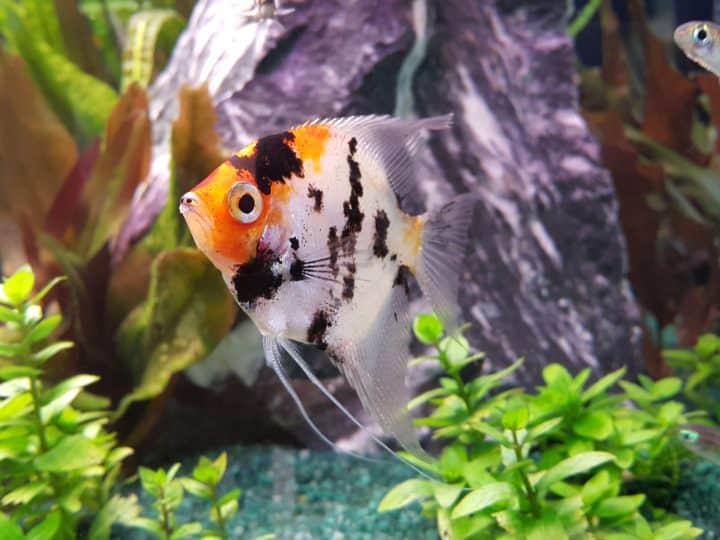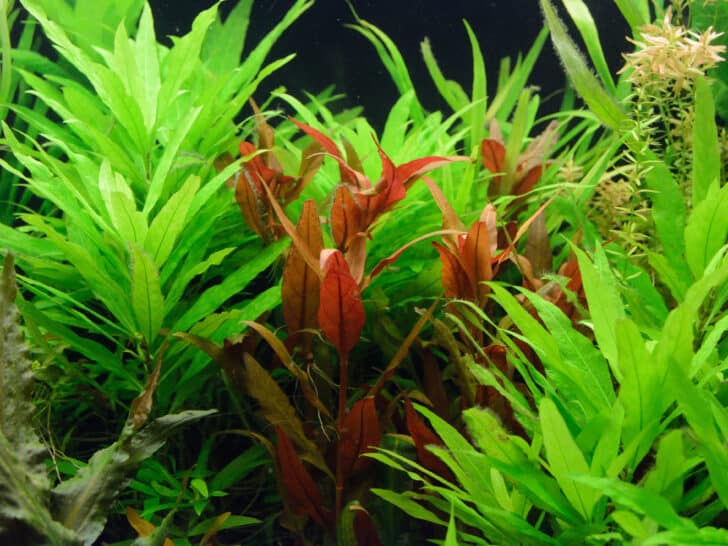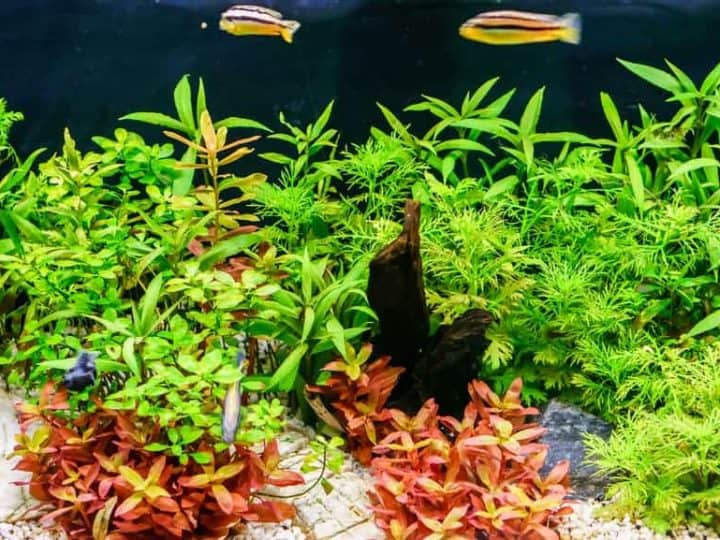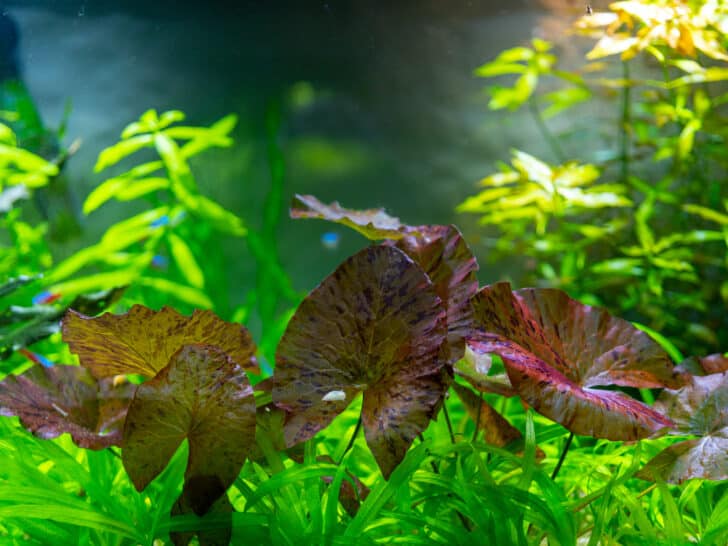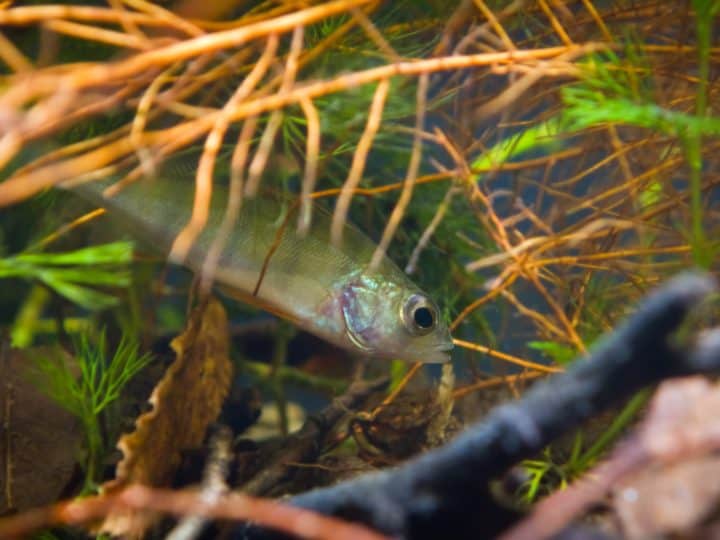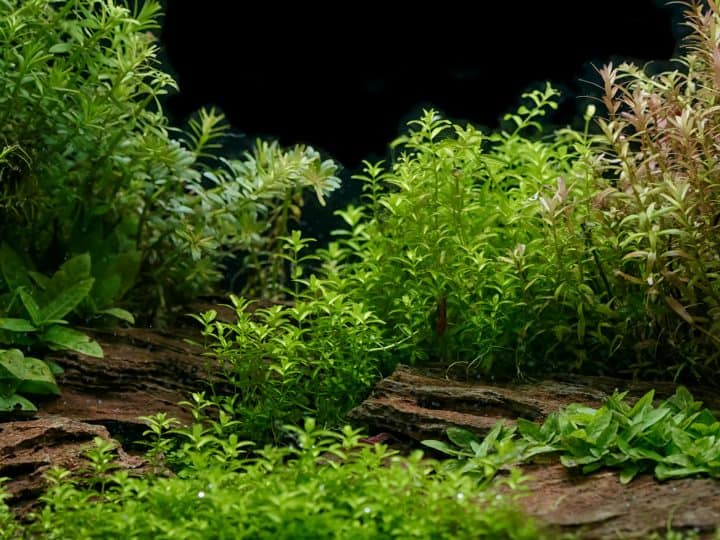Planted tanks can be very beautiful, but only if the plants grow properly, and they require many different micronutrients and macronutrients to survive and thrive. That raises the question: how often should you add fertilizer to a planted tank?
Quick Answer
In most cases, a single dose of fertilizer per week should suffice for planted tanks. However, this depends on the plants in question, as well as tank conditions. Some plants may need fertilizer once or twice per week, some on a monthly basis, and some never at all.
Today, I want to take a closer look at how often planted tanks require fertilizer, if all plants require fertilizer, and how to recognize when your aquarium plants are in need of nutrients. Keep reading to find out what the different types of aquarium plant fertilizer are, how to use them, and how to get started with setting up a planted tank.
How Often Should Planted Tanks Be Fertilized?
Unfortunately, there is no clear-cut answer to the question of how often planted tanks need fertilizer. The number one defining factor here is what types of plants are in the tank.
There are dozens, if not hundreds of common aquarium plants that you may have, and they each have slightly different requirements.
There are some extremely low maintenance aquarium plants, such as Java Fern and Java Moss, which may get enough nutrients from the water column and the substrate alone, without requiring any additional fertilizer.
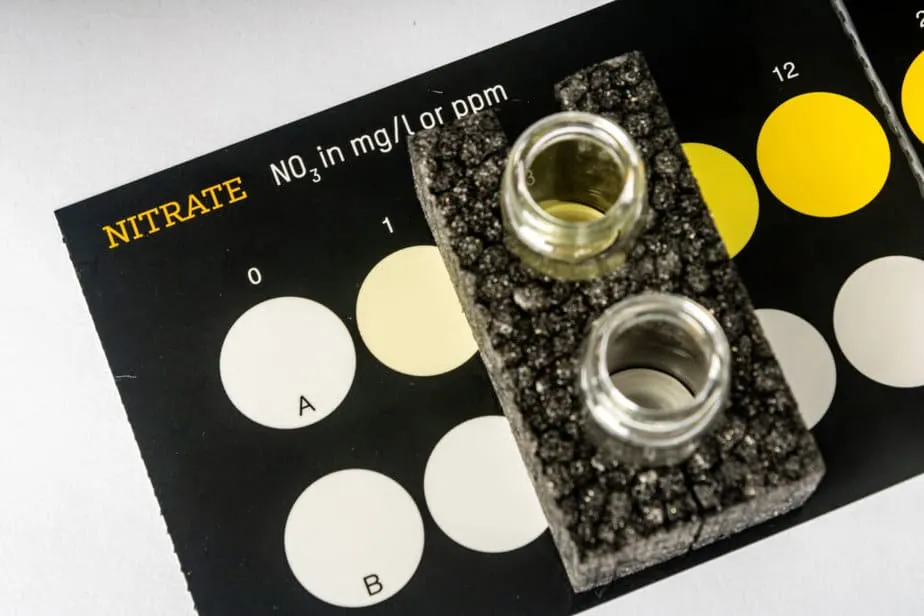
However, there are also many aquarium plants, such as red leaf aquarium plants, which require regular doses of micronutrients and macronutrients, sometimes up to twice per week.
That said, in most cases, fertilizing your aquarium plants once per week should be more than enough.
Considering that you have a regular planted aquarium that has a functioning filter, some fish as inhabitants, and fairly basic aquarium plants, you can expect the plants to benefit from fertilization anywhere from once per week to once per month.
Do All Aquarium Plants Require Fertilizer?
As mentioned above, not all aquarium plants require a lot of maintenance, and there are those that don’t require any fertilizer at all.
There are many plants that can get enough nutrients out of the water column and the substrate.
Some examples of this include anacharis, java fern, java moss, rotala rotundifolia, water sprite, water wisteria, cryptocoryne wendtii, and more.
There are also many aquarium plants that require regular doses of fertilizers.
Keeping that in mind, even the plants that don’t necessarily require fertilizer can still benefit from it. While aquarium plants such as the Java Fern may be able to survive, strictly speaking, it may not necessarily thrive. If you want your aquarium plants to be healthy and strong, giving them a regular dose of fertilizer is recommended.
Recognizing When Aquarium Plants Require Fertilizers
If you are unsure of whether or not your aquarium plants require fertilizers, there are some ways to tell, with testing for nitrates and looking for nutrient deficiencies being the two best ways.
Testing for Nitrates
One thing that made my life a lot easier here is when I started testing for nitrate levels in the water.
Using a simple test kit, you can find out exactly what the nitrate concentration in the water is like.
In case you were wondering, the reason I am talking about testing for nitrates is because nitrates are the main source of nitrogen for plants, and nitrogen is one of the most important nutrients of all.
Generally speaking, for most aquarium plants, nitrate levels should be at least 20 PPM.
However, also keep in mind that nitrate levels above 40 PPM may be toxic to fish, so there is a bit of a balancing act here.
If nitrate levels are under 20 PPM, you’ll want to supplement it with some fertilizer.
Recognizing Nutrient Deficiencies
The other way to tell if your aquarium plants need fertilizer is by looking at them and watching out for nutrient deficiencies.
Let’s take a quick look at some of the most common nutrient deficiencies in aquarium plants and how to recognize them.
- A nitrogen deficiency may be characterized by older leaves turning translucent or yellow, particularly at the leaf tips.
- If you see that the leaves are pale or yellow, particularly the newer leaves, along with leaf veins that are darker in color, then your aquarium plant may have an iron deficiency.
- If your plant has a potassium deficiency, you’ll see small pinholes forming in the leaves, and the leaves may also start to turn yellow or brown at the edges.
- If you see that older leaves are turning yellow and have brown patches, this is a clear sign of a phosphate deficiency.
- If your plant has a magnesium deficiency, older leaves may start to turn lighter in color, with the veins remaining dark.
- If you see that the new leaves on the plant are growing in a twisted manner, this may be due to a calcium, magnesium, or manganese deficiency.
Three Main Types of Fertilizers to Use in Planted Tanks
There are three main types of fertilizers that you can use in planted tanks, and which one you use somewhat determines how often you need to use them. Let’s take a quick look.
Root Tabs
Root tabs are special types of aquarium fertilizers that are buried under the substrate, they look like little tabs or pucks, and slowly release their nutrients over a set period of time.
Depending on the exact type of root tab you have, they usually need to be replaced every 4 to 8 weeks.
These are usually best for root feeder plants, with water column feeders usually benefiting more from liquid fertilizers.
Root tabs are also ideal to use when you first set up a tank, because you can bury them right in the substrate. Here are some of the best root tabs that the market has to offer.
All in One Liquid Fertilizers
You can also consider an all-in-one liquid fertilizer. These are fertilizers that you just measure out and pour directly into the aquarium water.
These usually contain all of the nutrients that aquarium plants need to survive.
However, to avoid creating a toxic environment for your fish, only small quantities can usually be added at a time.
For this reason, liquid fertilizers may have to be added into your aquarium once or even twice per week.
Specialized Powder Fertilizers
There are then also special powdered fertilizers.
Powdered fertilizers are usually very specific in nature, such as nitrogen fertilizers, potassium fertilizers, and so on and so forth.
These are usually best used on a case-by-case basis.
For instance, a nitrogen powdered fertilizer should be used when you notice that nitrogen levels are getting low in the tank, but other nutrients still appear to be present in moderate quantities.
This type of fertilizer is generally used to remedy a specific nutrient deficiency.
Are Fertilizers Safe for Fish and Other Tank Inhabitants?
Many people worry about using fertilizers in their planted tanks, especially where the health of their fish is concerned.
Rest assured that if you get an aquarium plant fertilizer that is labeled as being safe for fish and other tank inhabitants, you should have no problems at all.
This is especially the case if you use the plant fertilizer as directed.
Generally speaking, aquarium plant fertilizers are perfectly safe for tank inhabitants as long as you don’t overdose the tank.
However, be sure not to use regular garden fertilizers or those labeled as being for plants only.
Conclusion
Unfortunately, a lot of this boils down to a bit of trial and error.
You’ll need to find a good balance of nutrient levels in your aquarium to keep all of your plants and fish happy.
This is something that might require a bit of time for you to master.

